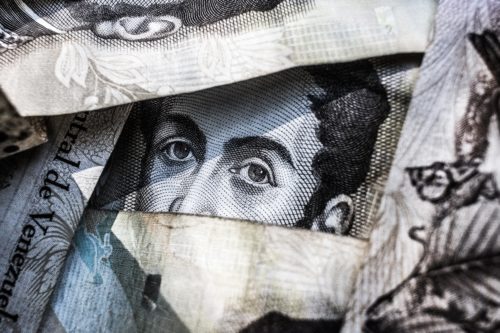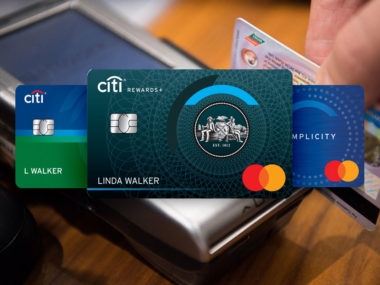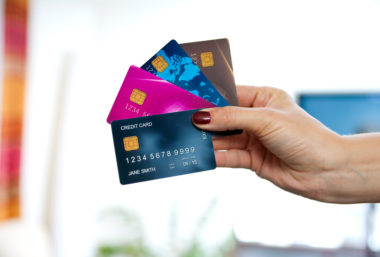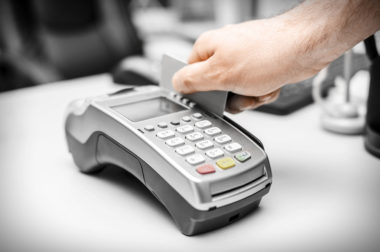There are plenty of reasons a person would want to pay their mortgage with a credit card. One may be to obtain credit card points. Another may have to do with financial strain. If they are lacking the funds to pay for their mortgage until say, payday, it may seem beneficial for someone to be able to use a credit card until the funds become available.
Unfortunately, mortgage lenders do not typically allow borrowers to make direct payments from their credit card. If your credit card offers a bill pay option, these typically limit cardholders to a selected list of potential payees and it’s usually unlikely that your mortgage company will be on it. If you are trying to put your mortgage on credit cards because it is too high for you to afford, consider other options to lower your mortgage payment.
Charging expenses onto a credit card is essentially the same as taking out a loan, and taking out one loan to pay off another is generally a bad idea. Unless you are getting a lower interest rate by refinancing, you are better served paying cash to eliminate your loans. The average mortgage loan is taken at a 4.5 percent interest. Typical credit card accounts involve, on average, a 14 percent interest fee. So by paying your mortgage with a credit card, you are essentially just increasing the overall interest you are paying on the initial loan if you do not pay off your credit card in full before the end of the month. This is how credit card companies make money at your expense.
Table of Contents
Why Won’t Lenders Let You Pay Your Mortgage With a Credit Card?
Simply put, it costs lenders money to accept credit cards. Due to interchange fees that exchange hands when a credit card is processed, most banks don’t want to incur the costs required to run a credit card for a mortgage payment. Typically, it is not normal for a lender — be it the government, a private bank, credit union, etc. — to allow for credit card payments for mortgage payments. Lenders don’t want to have to pay fees in order to take your mortgage payment, because that is essentially lost revenue. However, some mortgage lenders will let you pay your mortgage with a credit card. To ensure that you have all the facts pertaining to your own account, check with all three parties involved in making your mortgage payment — card network, card issuer, and mortgage lender. Knowing what is available to you is the best way to ensure that you payment will process correctly and on time. Without checking, you risk that your payment will being declined.
There is no fee-free way to pay your mortgage with a credit card. You also risk rapidly inflating your credit balance by paying with a credit card if you are not paying the money off before you incur interest charges on it. Typically lenders refuse credit card payments because of the merchant fees attributed to the transaction, but some may also be concerned about increasing your risk of default.
Most lenders don’t allow credit cards to be used on mortgage payments because of the potential for abuse. A person can quickly get into debt further if they are charging their mortgage to their credit card and not paying it off immediately. In reality, a $1,500 loan payment with 4.25 percent interest becomes a $1,500 payment with interest payments from 12.9-23 percent or even higher. A missed payment can add up to serious credit card debt.
The majority of retail companies have an incentive to accept credit cards. Even with the required transaction fees, companies know that you are more likely to spend more with a credit card than if you just paid in cash. Most merchants tend to make up the transaction fees in extra sales and profits. However, a mortgage company has no incentive to offering credit card payments. Chances are you aren’t using your card to buy more mortgage.
How to Pay Your Mortgage With a Credit Card
There are some “loopholes” that allow, in theory, for a person to use a credit card to finance a mortgage payment. However keep in mind that they are almost never a great idea to utilize, as they often provide no benefits, points, or rewards for doing so.
Take Out a Cash Advance
One of the biggest no-nos to do with a credit card is to get a cash advance. They can become extremely costly quickly. With that said, if you find yourself in a pickle and need to utilize this option for a mortgage payment, beware of what it entails. Cash advances are charged a fee that’s either a minimum flat rate or a percentage of the requested cash advance amount. Some credit card terms may state that the cash advance fee is $5 or 5 percent, whichever is greater. Either way you are incurring fees on your credit card. Cash advance fees typically range from 2 to 5 percent of the total amount, with some credit cards charging even higher.
Note that most credit card companies won’t allow a cardholder to take out their entire credit line in the form of a cash advance. Most of the time advances are capped at a few hundred dollars. This means that even if you chose to utilize a cash advance for a mortgage payment, it isn’t a reliable way to obtain a significant amount of cash in the case of an emergency.
Cash advances almost always have a higher interest rate in comparison to typical card purchase rates. As with any type of “loan”, the longer you take to pay off the cash advance, the more interest you’ll end up paying. There is typically no grace period on cash advances. This means that you don’t get a full billing cycle to pay it back avoid a finance charge. Instead, the interest starts accruing from the moment the transaction clears your credit card account.
Use Money Orders
Money orders act similarly to a cash advance when it comes to credit cards. They are a paper document that guarantees funds. If you obtain a money order with a credit card, be prepared to pay back your bank as though you took out a cash advance. Expect to pay a fee for the money order which can range anywhere from a few dollars to ten. Money orders have a maximum limit as well. This means that if you are paying your mortgage above $1,000 with money order, you will need to purchase multiples (and pay the associated fees) to complete your transaction.
Even if you have the option of paying by credit card, think twice before making it happen. Credit card issuers consider a money order bought with a credit card as a cash advance. Which means you not only have to pay the transaction fee, but the 3-5 percent of the amount as a fee, plus interest.
Use a Third-Party Payment Platform
Third-party service providers allow you to pay your mortgage with your credit card. The fees for these providers are 2.5-3 percent per payment for credit cards. Keep in mind, that the fees charged will probably exceed the credit card rewards you would receive. If the fee on your mortgage payment is 2 percent, but your credit card only gives you 1 percent cash back, you will be losing money by paying with you credit card.
Plastiq has a 2.5 percent fee. You pay Plastiq a fee equaling 2.5 percent of your mortgage payment to pay by credit card. The platform then delivers an electronic payment to the lender if they accept it, or they cut the lender a check. This platform allows for a one time payment or you can set up an automatic payment option. This platform accepts MasterCard and Discover credit cards as well as MasterCard gift cards to pay for mortgages.
Venmo carries a 3 percent fee on credit card transactions and requires the recipient to be apart of the Venmo platform as well. They accept Discover, Mastercard, and Visa credit cards.
Debitize is a free app that allows the user to run a credit card as a debit card. It works in the background to pull funds from your checking account to pay off credit card purchases. The point of this program is to help you utilize the rewards you can get from a credit card, while paying it off for you. This platform will only work for lenders that accept credit card payments on mortgages. However, it does help to keep your credit score stable and thriving while you are paying with your credit card.
Consider the risk that is involved with paying through a third party. While those above offer and promote security of their sites, third party programs like this (ex: TIO owned by PayPal) have recently closed their doors due to security breaches. If you take advantage of any of these third party programs, emphasize caution and make sure you are tracking your bills and statements closely. Monitoring your credit in this situation is essential to make sure you don’t make a credit mistake.
Use Gift Cards or Prepaid Debit Cards
A good option for paying a mortgage with a credit card is to purchase a prepaid card that allows you to move money to an online checking account. Buying prepaid pin-activated cards with your credit card can gain you access to paying options like Visa Gift Cards and AmEx Bluebird. These can help by retaining a usable balance. By requiring a pin, the card will work as a debit card even though it was paid for with a credit card.
American Express Serve is a reloadable prepaid card that works like an online bank account, allowing you to pay bills and make everyday purchases. This method requires you to load a credit card or pin-enabled gift card on to the account to pay your mortgage. This type of program allows you to access the credit card rewards you may have. Keep in mind that these types of prepaid cards are not as secure as credit cards.
Keep in mind that if you utilize this method you want to make sure that your credit card issuers doesn’t charge loading fees. Also be aware that these can be considered cash advances by your credit card company. These themselves harbor fees and do not count towards overall points or bonuses from your credit card company.
Should I Use a Credit Card to Pay My Mortgage and Earn Rewards?
Usually no, unless you understand the risks, can manage your debt, spending, and credit card, have you have determined that you’ll be able to get more in rewards than you spend in fees.
Transactions on a credit card must make sense. If you get 1-2 percent reward points on every dollar you spend, consider the interest that you are also paying on your purchase. If these numbers leave you in the red, you are not utilizing the rewards program effectively and losing money by paying your mortgage with a credit card.
If you have an introductory rate deal with your credit card provider that has a “minimum spend” period, this would be the best time to utilize paying your mortgage with a credit card. A sign up bonus may be the best time to make a mortgage payment. Some credit cards allow a new customer to earn 35,000-50,000 bonus points at a time if a certain amount of money is spent within the first few months of having the card.
For example if a card comes with a $500 cash bonus when the owner of the card spends at least $3,000 within the first three months and you use a $1,000 mortgage payment to reach that bonus number, you are earning a 17 percent return. If there is a 2.9 percent service fee, the cardholder then loses $29 from that $500 bonus. You are still getting a cash bonus, but at a fee. Remember that paying your mortgage with a credit card offers limited opportunities to earn rewards points.
If you can navigate the complicated waters that come with paying a mortgage by credit card, it may be worth a try. However, if you feel intimidated by this concept and do not believe in your ability to pay off the charges in time, it could end up hurting your credit score more than it benefits you.
Image Source: Freddie Collins on Unsplash





